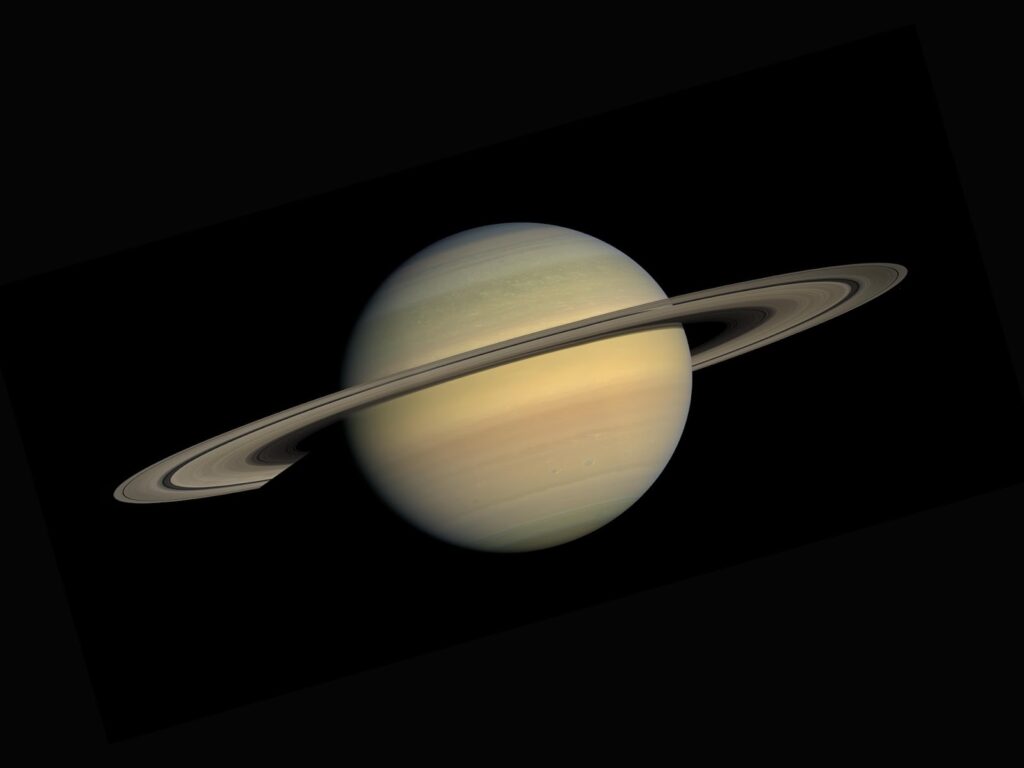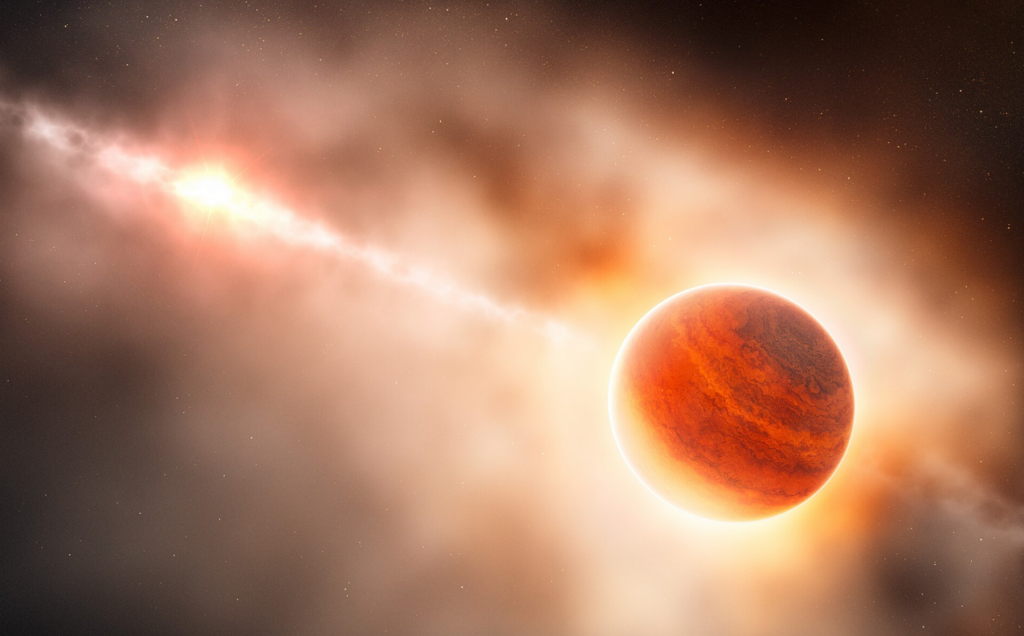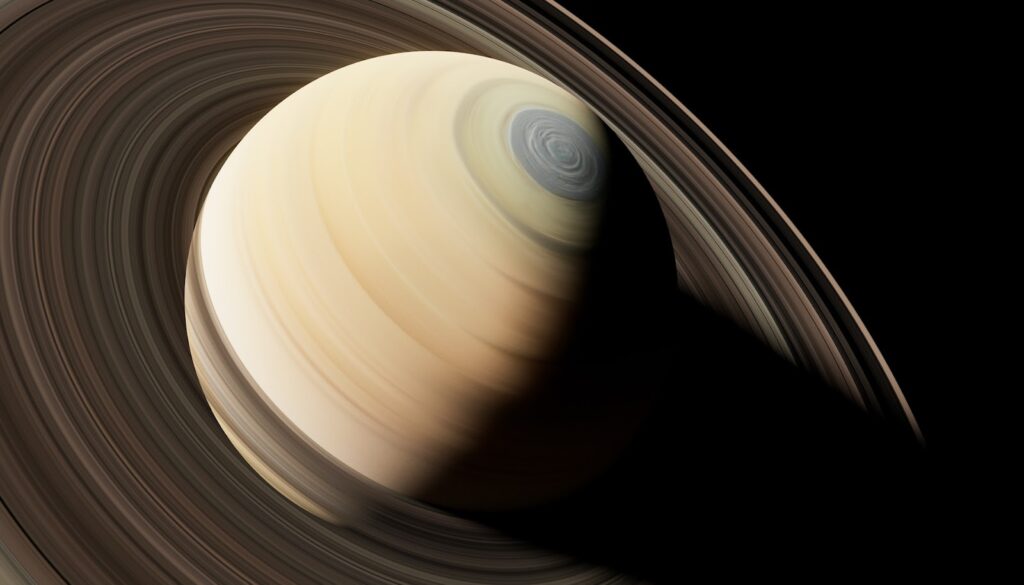In the grand scheme of the universe our little solar system is not considered huge. To ourselves however the magnitude of distances between our planets is impressive. In this article we are going to look at one of the planets in the solar system, find out more about it and try to answer the question: how far is Saturn from Earth?
What Is Saturn?
The planet Saturn is one of only two gas giants in our solar system and is the fifth closest to the Sun. This massive planet is actually the second largest in our solar system after fellow gas giant Jupiter. It has a distinctive appearance thanks to the thousands of ringlets that adorn the planet.

These ringlets are made up of chunks of ice and rock and although not completely unique in the solar system they are the most extensive and spectacular found on any of our system’s planets.
What Is a Gas Giant?
Earlier we mentioned the term gas giant while describing Saturn but what exactly does that mean? Well essentially a gas giant is a large planet such as Saturn and Jupiter in our own solar system which is mainly composed of helium and/or hydrogen.
These planets do not have hard surfaces like our own planet, they are instead made up of swirling gases above a solid core. As such gas giants as the name suggests can be massive and often tend to be closer to their stars than other planets.

The gas giants in our own solar system are not typical of those found elsewhere in the universe. Generally speaking gas-dominated planets like Saturn orbit extremely close to their parent stars and usually circling them in as few as 18 hours. These gas giants are often referred to as hot Jupiters although our own Jupiter is far from hot.
Saturn’s Structure
Based on observations it is thought that Saturn has a rocky core which is surrounded by a deep layer of metallic hydrogen. Next it is thought that an intermediate layer of liquid hydrogen and liquid helium exists before finally all of this is enveloped in a gaseous outer layer.

Saturn’s yellowish hue is thought to be due to crystallized ammonia in its upper atmosphere. An electrical current found within the metallic hydrogen layer is thought to create the planet’s magnetic field which is much weaker than ours on Earth.
Saturn’s outer atmosphere is generally considered bland and lacking in contrast, although occasionally long-lived features may appear. It is a violent planet in terms of winds with wind speeds reaching 1,800 km per hour.
The planet’s prominent ring system which as mentioned comprises mainly ice chunks and rocky debris is likely its most iconic feature.
Does Saturn Have Moons?
Yes, Saturn has moons. In fact, as of June 8th 2023 the running total stands at 146 moons with the largest being bigger than the planet Mercury. The smallest moons of Saturn are about the size of a sports arena. Interestingly the many moons of Saturn shape, contribute to and also collect material from the planet’s iconic rings
Titan is the most massive of Saturn’s moons and is larger than the planet Mercury. It was the first of 8 moons of Saturn that were discovered after the use of telescopes began. First identified in 1655 by Christiaan Huygens, Titan’s fellow moons Tethys, Dione, Rhea, Lapetus, Mimas, Enceledus and Hyperion would be discovered by 1848.
The naming system for Saturn’s moons was suggested by John Herschel in 1847. He proposed that it be named after mythological figures related to the Roman god Saturn whose Greek equivalent was Cronus. The first seven discovered would be named for Titans, Titanesses and Giants, all siblings of Cronus.
History of the Observation of Saturn
Babylonian astronomers knew of Saturn and actively observed and tracked its movements. The ancient Greeks knew it as Phainon while it was the Romans who deemed it the “star of Saturn.” It became important to the worship of the respective gods of agriculture. The Romans worshipped Saturn while the Greeks called it and indeed still do call it Cronus.
In Hindu astrology, Saturn is one of nine astrological objects, known as Navagrahas. In this respect it is known as “Shani” and represents judgement of everyone based on the good and bad deeds performed in their life.

This is also a planet that was designated in the beliefs of the five elements in both ancient Chinese and Japanese culture. It was considered the Earth star by both cultures.
Telescopic Observations
Initially we did not know that Saturn had its iconic rings. We could see it through early telescopes but we needed a 15-mm-diameter telescope to be able to see them. This did not come along until Christiaan Huygens used one in 1655 and finally saw them. Until then the odd shape Galilileo saw through his telescopes was assumed to be caused by a moon on either side of the planet. It was not moons of course it was the rings.
Over the next two hundred years several moons were discovered by various astronomers but only a few other significant discoveries occurred. Since then more moons have been discovered and advancements in technology have allowed for more intense study.
Spaceflight Missions
A number of missions have been undertaken since 1979 the first of which was Pioneer 11. This robotic space probe was launched with the intent to pass within 20,000 kms of the cloud tops of Saturn. The probe took pictures of the surface and several moons but unfortunately the quality of the images showed little in the way of new detail.
In 1980 and 1981 two separate voyager missions also performed flybys of Saturn. More images were taken and tests were performed, one of which proved that Saturn’s atmosphere is impenetrable to visible wavelengths. Several new natural satellites were also discovered at the same time.
Starting in the early 2000s several more journeys were made to Saturn gathering more information and getting progressively better images of Saturn and its major moons.
How far Is Saturn from Earth?
So we know that unmanned probes have passed relatively close to Saturn but just how far away is Earth from Saturn? Well bearing in mind that the orbits of the two planets are not completely circular the answer can vary but the closest Earth is to Saturn during their respective orbits is 746 million miles.
Final Thoughts
Since the late 1970s we have been sending probes to take images of Saturn which have passed within a few hundred thousands kms of the cloud layer. These probes have had to travel at the very least 746 million miles to get there in the first place. This is a staggering distance and to cover that distance it takes roughly 3 years and 2 months with the use of various gravitational pulls available in the solar system to help boost speeds.
